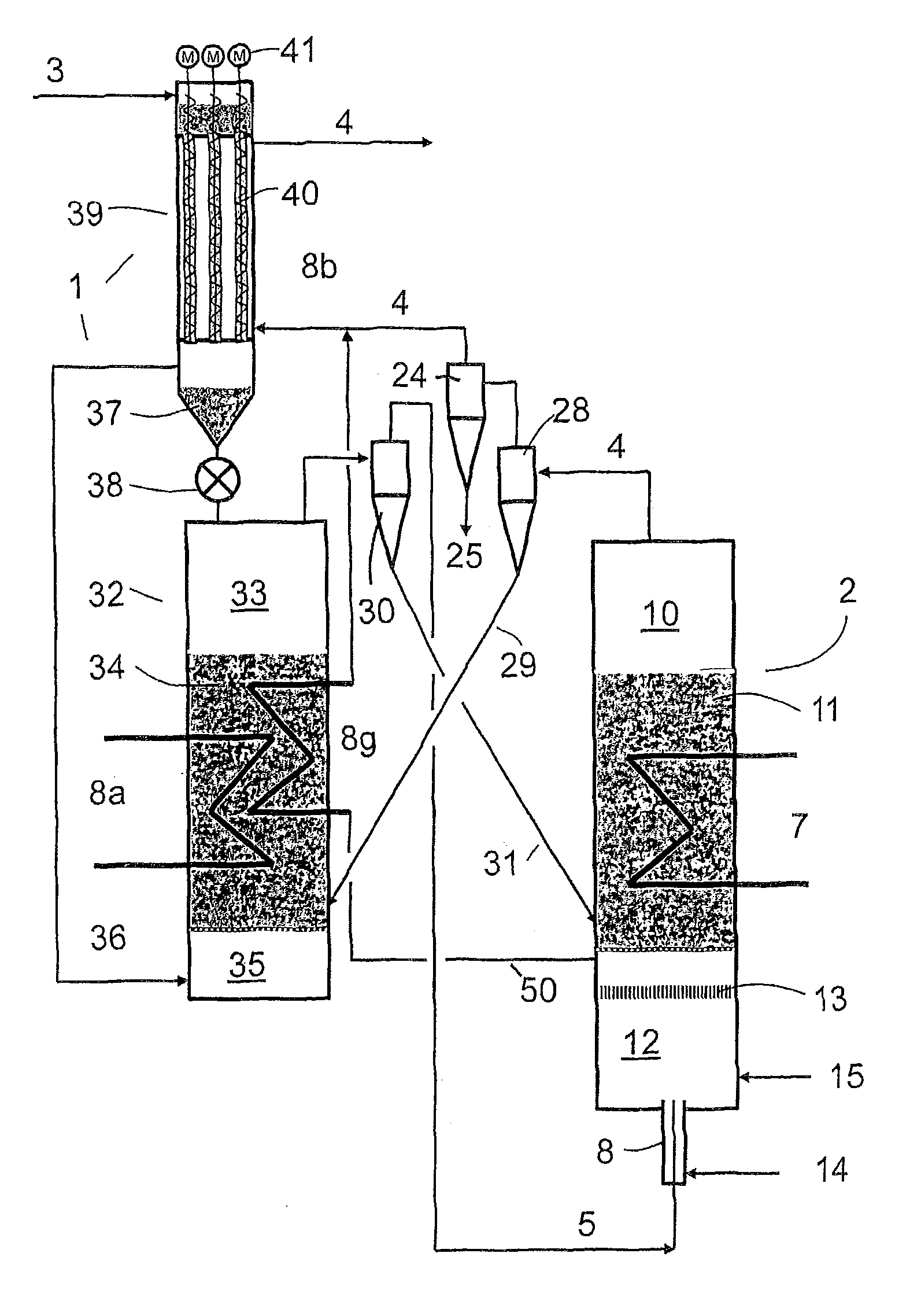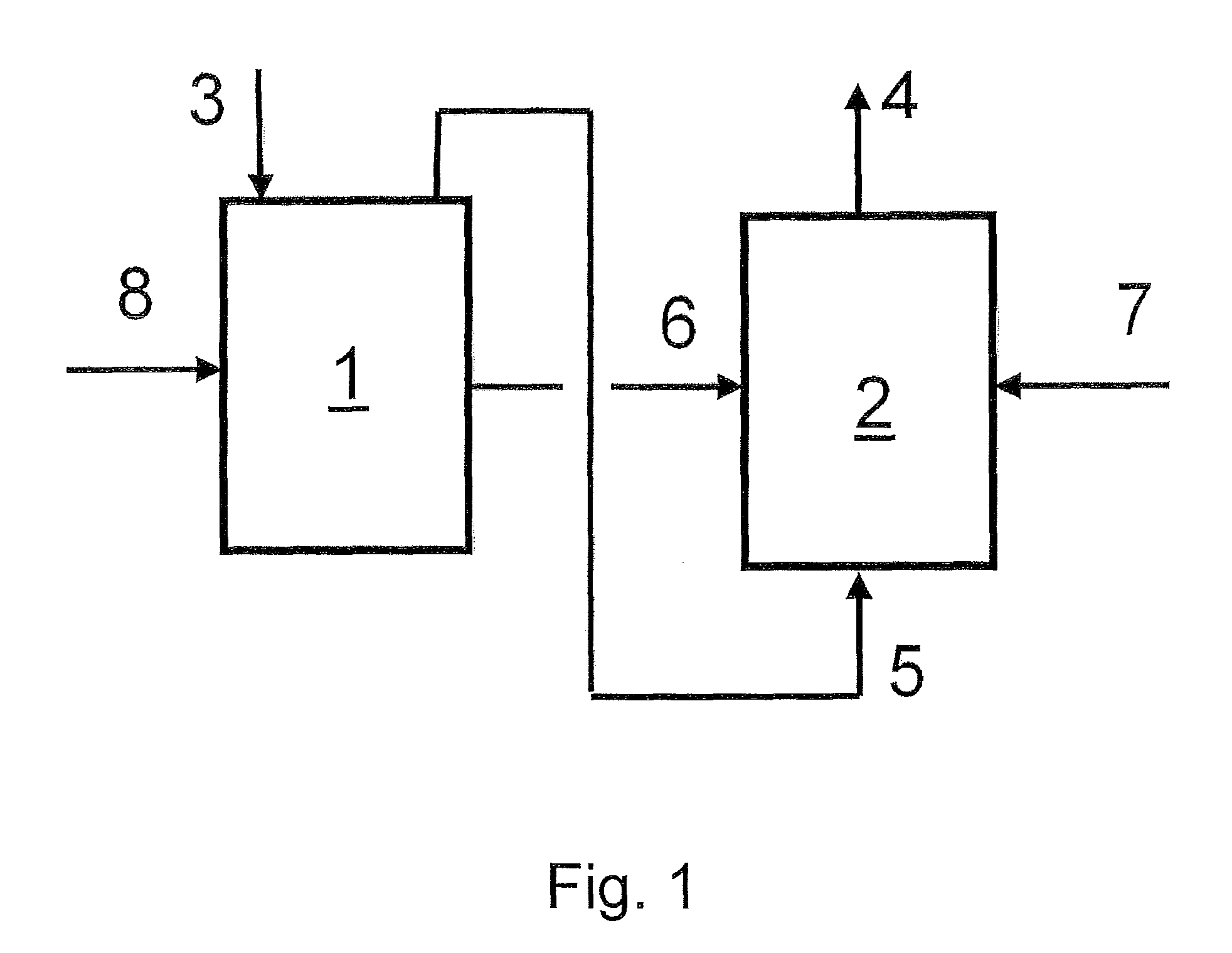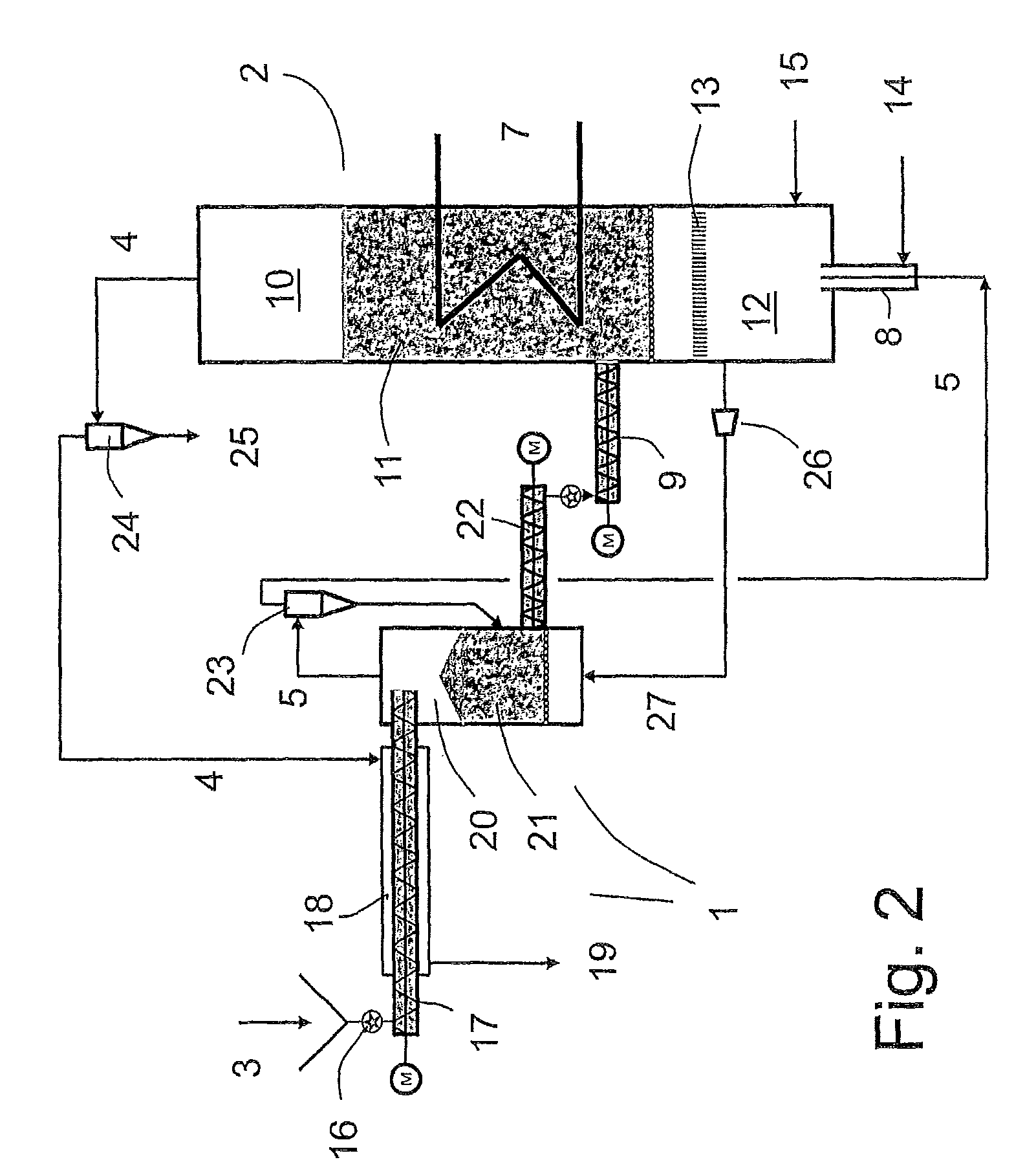Method and device for producing synthesis gas from biomass
a technology of synthesis gas and biomass, which is applied in the direction of combustible gas production, biofuels, gasifier mechanical details, etc., can solve the problems of reducing the efficiency of the plant and excreting steam
- Summary
- Abstract
- Description
- Claims
- Application Information
AI Technical Summary
Benefits of technology
Problems solved by technology
Method used
Image
Examples
Embodiment Construction
[0034]According to FIG. 1, the device according to the invention for producing synthesis gas from biomass consists of two reactors. In the reactor 1, the biomass 3 introduced is decomposed into pyrolysis coke and pyrolysis gas by supplying an amount of heat 8 or by partial oxidation. The pyrolysis coke 6 is introduced into the fluidised bed of a synthesis gas reactor 2. The pyrolysis gas 5 is used as fluidisation gas for the fluidised bed of the synthesis gas reactor 2. By supplying an amount of heat 7 into the synthesis gas reactor or by partial oxidation, the synthesis gas 4 is generated from the pyrolysis coke 6 and the pyrolysis gas 5.
[0035]FIG. 2 shows a more detailed representation of the concept according to the invention. The pyrolysis 1 consists of a plurality of devices for conveying and pyrolysing the biomass introduced. The biomass 3 is introduced through a rotary valve 16 into a screw conveyor 17 that has a heating jacket 18, through which the hot synthesis gas 4 flows....
PUM
| Property | Measurement | Unit |
|---|---|---|
| pressure | aaaaa | aaaaa |
| pressure | aaaaa | aaaaa |
| thermal power | aaaaa | aaaaa |
Abstract
Description
Claims
Application Information
 Login to View More
Login to View More - R&D
- Intellectual Property
- Life Sciences
- Materials
- Tech Scout
- Unparalleled Data Quality
- Higher Quality Content
- 60% Fewer Hallucinations
Browse by: Latest US Patents, China's latest patents, Technical Efficacy Thesaurus, Application Domain, Technology Topic, Popular Technical Reports.
© 2025 PatSnap. All rights reserved.Legal|Privacy policy|Modern Slavery Act Transparency Statement|Sitemap|About US| Contact US: help@patsnap.com



